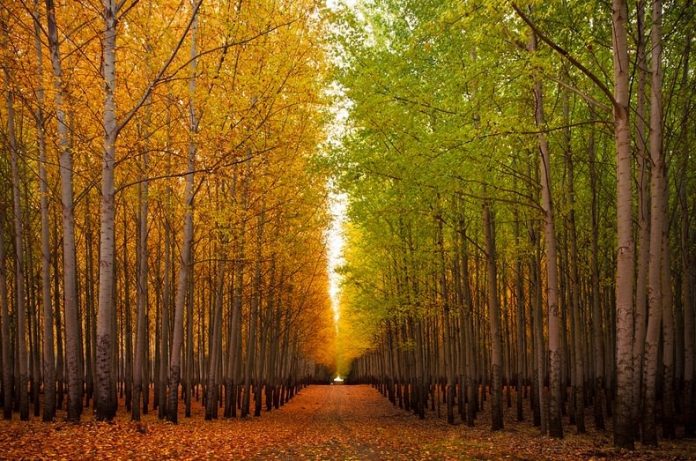A recent study from the University of Delaware reveals that tree trunks in upland forests actually emit methane rather than store it. This represents a new, previously unaccounted source of this powerful greenhouse gas.
Methane is a potent greenhouse gas, which has a warming effect more than 80 times stronger than carbon dioxide. Despite this, the much greater quantity of carbon dioxide in the atmosphere means that it is responsible for the vast majority of observed climate change.
Trees in Fair Hill Natural Resources Management Area, Maryland, were visited throughout their growing season from April to December. The researchers measured methane emission and absorption of tree trunks, soil and bits of dead wood littering the forest floor.
Some trees are stronger emitters than others, the study found. Beech trees were the biggest methane emitter, and tulip poplars emitted both a lot of methane and carbon dioxide. Red maples and sweet birch were also intermittent methane emitters.
The picture for the dead wood was more complex than for the living tree trunks. When it was fresh, dead wood on the forest floor was similar to the living trees, releasing methane. Then eventually it would switch to becoming a methane sink.
“When a tree falls over, it’s still functionally the same in terms of methane emissions. Over time, as it decays, my theory is that it gets colonised by soil bacteria that consume methane and it shifts to behave more like the soil, resulting in a methane sink,” said study author Daniel Warner of the University of Delaware in a statement.
“As it decays it becomes a lot more variable. Some of the super-decayed wood was still releasing methane but a lot of it was consuming methane,” said Warner.
In total, about 3.5% of the methane absorbed in the upland forest was offset by emissions from trunks. Exactly where this methane released by the trees originates from isn’t yet known. It could be that internal rotting within the trunk generates the methane, or it could be generated in the soil and transported from the roots to the trunk where it is released.
Rodrigo Vargas, also a study author at the University of Delaware, added: “At this moment, the mechanisms of methane production in upland forests are not clear. Methane can be either transported from the soils upward inside the stem and diffused to the atmosphere or produced inside the stem by fungi or archaea, single-celled microorganisms.”
















We are told, “Methane is a potent greenhouse gas, which has a warming effect more than 80 times stronger than carbon dioxide. ”
Reporters should be asking scientists, “If you double methane how much will that run up the temperature in actual degrees, and how long will that take?” Because telling us that it’s 80 times stronger than CO2, doesn’t really tell anyone anything.
Steve Case – Milwaukee, WI